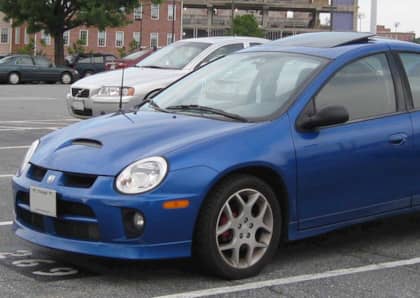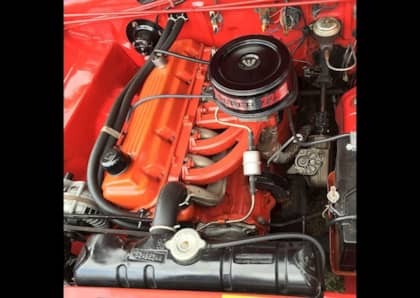3 Classic Cars That Gave Their Lives For More Successful Models
Sometimes car companies have to learn how to walk before they can run. In a world where financial pressures and technological limitations can make it tough to hit a home run with the first at bat, automotive greatness can come from standing on the shoulders of an older model.

Using an existing platform to launch an 'all-new' car is a time-tested tradition that has lead to some of the most interesting, and successful, vehicles in the history of the industry. Whether its nipping and tucking a frame, snagging an engine that's finally had the millions of real-world testing miles it needed to provide trouble-free performance, or slapping a stylish body on a plain Jane chassis, being second in line often gives a car a head-start on success.
Let's take a look at 3 classic cars that gave their lives so that more successful models, could see the light of day.
The Ford Falcon Becomes The Ford Mustang
When the Ford Falcon appeared for the 1960 model year it proved that the Blue Oval could court entry-level buyers with a reasonably advanced, and frugal, automobile. Built using a lightweight unibody design and offered as a coupe, wagon, convertible, sedan, and even a pickup (the Ranchero), the Falcon was decent to drive and cheap to operate if buyers stuck to its standard inline six-cylinder engine.

The Falcon's success was immediate, with more than a million cars sold in its first two years of production. A V8 was introduced for the Falcon Sprint by mid-1963, but the car was never really marketed as being fun-to-drive. Rather, the Sprint is more notable for inspiring the production of a much better-known vehicle that came to define the Ford performance brand for the next 50 years.

Executive Lee Iacocca had been pushing Ford hard for an affordable sports car since the beginning of the decade, and after several years of design studies the company had a winner. Not coincidentally, in the spirit of keeping costs down the body work of this new long-hood coupe, which would be called the Mustang, could be plunked down on existing Falcon running gear without any issues. This meant there was no need to build elaborate new assembly lines or even develop any unique suspension or drivetrain options, giving the pony car a massive leg-up in terms of cost and speed to market.

What happened next is common knowledge. Introduced in 1964, the Ford Mustang became a perennial sales champion for Ford, and continues to form the backbone of the company's sporty offerings. The Falcon soldiered on until 1970 but the Sprint's V8 was no match for the sex appeal of the similarly-gifted Mustang, and its sales gradually faded into the background before it was quietly axed.
GM's X-Body Births The A-Body
General Motors came late to the modern compact car game, and when it did finally arrive in 1980 it was a disaster. The X-body had been hyped as the most advanced set of automobiles ever to emerge from Detroit, and their use of front-wheel drive was intended to spark a revolution for Chevrolet, Pontiac, Oldsmobile, and Buick, who each got a version of the new platform.

The Chevrolet Citation and its sad crew of coupes, hatchbacks, and sedans sold like gangbusters in the first couple years and then busted up service bays and customer loyalty for the rest of the decade. It turns out the General hadn't bothered to properly test any of its new tech prior to installing it in the X-body, which meant there were issues with rust, suspension, transmissions, and noisy, rough engine performance across the board. There was even a federal lawsuit from the U.S. Justice Department over the cars' dangerous braking systems that led to numerous accidents.

Funny enough, much of the X-body concepts were sound, if flawed in their initial retail form. Working frantically behind the scenes to save Citation & co., GM's engineers were able to refine the front-wheel drive setup and smooth out the Iron Duke four-cylinder at its core to create a much more acceptable family of cars called the A-body, which despite being larger were virtually identical in terms of their general platform details.

It was far too late to change public opinion about the X-body, but when the A-body snuck onto the market in 1982 General Motors was able to direct irate customers into newer, more comfortable, and ultimately much more reliable models like the Chevrolet Celebrity, the Pontiac 6000, the Buick Century, and the Oldsmobile Cutlass Ciera.

Although the X cars left the scene by 1985, the A-body lasted for another decade and was a phenomenal sales success for GM, proving that sometimes the only difference between a good idea and a bad idea is taking the time to execute properly.
The Dodge Neon Evolves Into The Chrysler PT Cruiser
It's glossed over today, but the Dodge Neon was a stunning success when it was introduced in the mid-90s. Breaking the K car hegemony that had long ruled Mopar's compact efforts, the Neon (also be sold as a Chrysler and a Plymouth) was cheap to build, inexpensive to buy, and provided surprisingly decent handling for its class.

In fact, Dodge went on to build the American Club Racer version of the car that upped power, stiffened the suspension, and added a number of other tweaks to help transform the Neon into an autocross powerhouse. An R/T model followed, and eventually a turbocharged SRT-4 that generated a surprising 215 horsepower and 245 lb-ft of torque (later bumped to 230 horses and 250 lb-ft).

Despite its bonafides the Neon found itself restricted by its status as affordable basic transportation, which meant the appeal of the sedan-and-coupe combo was limited to a specific buyer. Eager to expand the reach of what it felt was a winning package, honcho Bob Lutz and designer Bryan Nesbitt seized on the retro vibes surging through the industry at the end of the '90s and produced the Chrysler PT Cruiser.

The PT Cruiser's upright styling was a clear homage to 1930s-era panel wagons, and it concealed a reworked version of the Neon's 'PL' or Platform Low chassis called the 'PT' or Platform Tall. Although not a complete borrow (what with its flat rear floor pan and a Watts twist-beam rear axle), enough of the Neon's magic was incorporated into Platform Tall to link the two vehicles in the family way. Chrysler eventually went so far as to make its own turbocharged version of the PT Cruiser (the GT), which delivered exceptional straight-line speed for what was essentially an affordable precursor to the current crossover craze.

With its unique body work capturing the spirit of the times, the PT Cruiser spent a decade as a sales darling for Chrysler, with 1.35 million examples finding owners by 2010. Featuring higher transaction prices than the Neon, it was a fitting exclamation point to the more than 2 million sales enjoyed by that cheap and cheerful compact.
More From Driving Line
-
Curious about sports cars that also had humble origins? Check out these parts bin specials that relied on regular roots to dazzle performance car fans.











